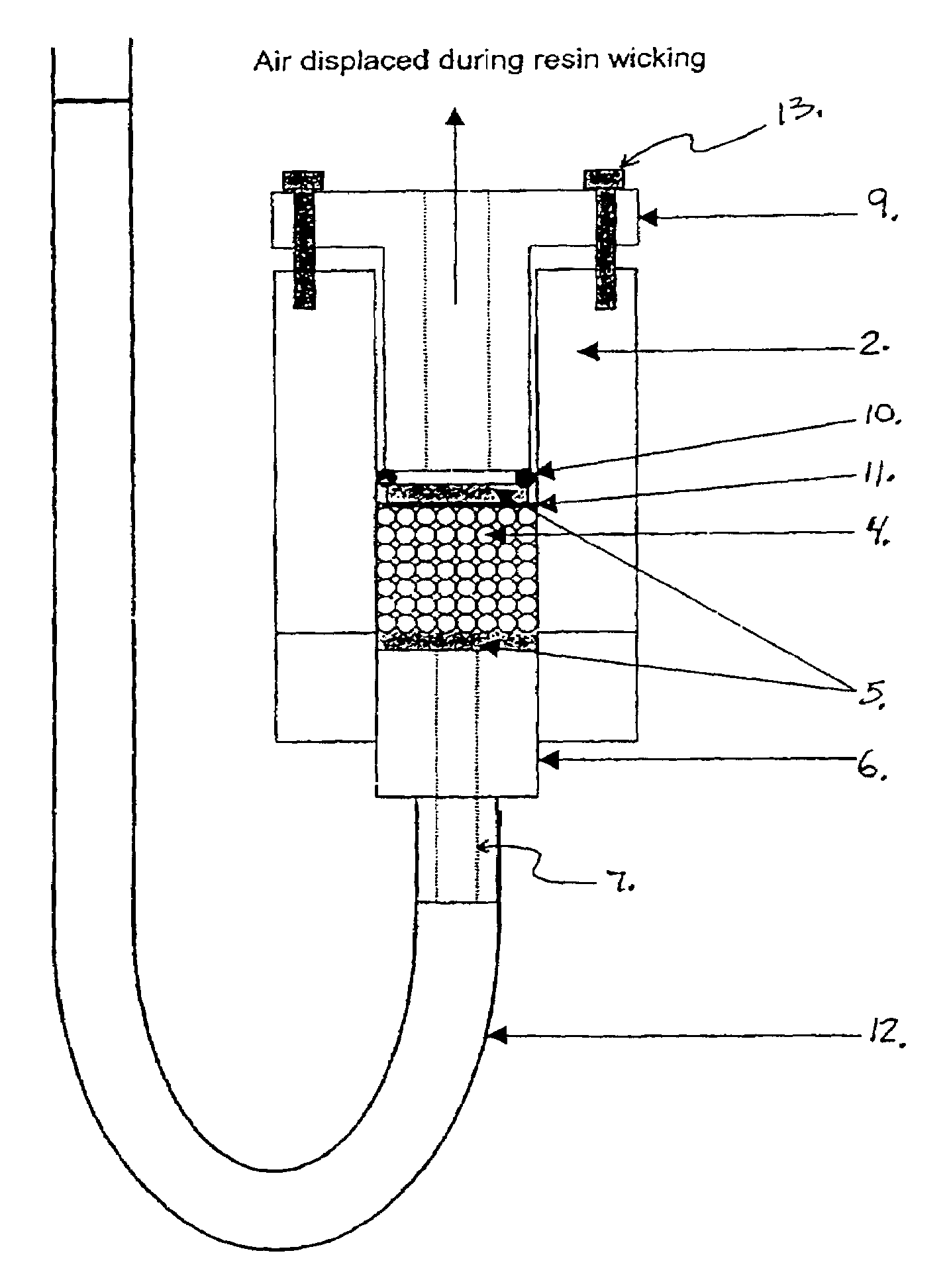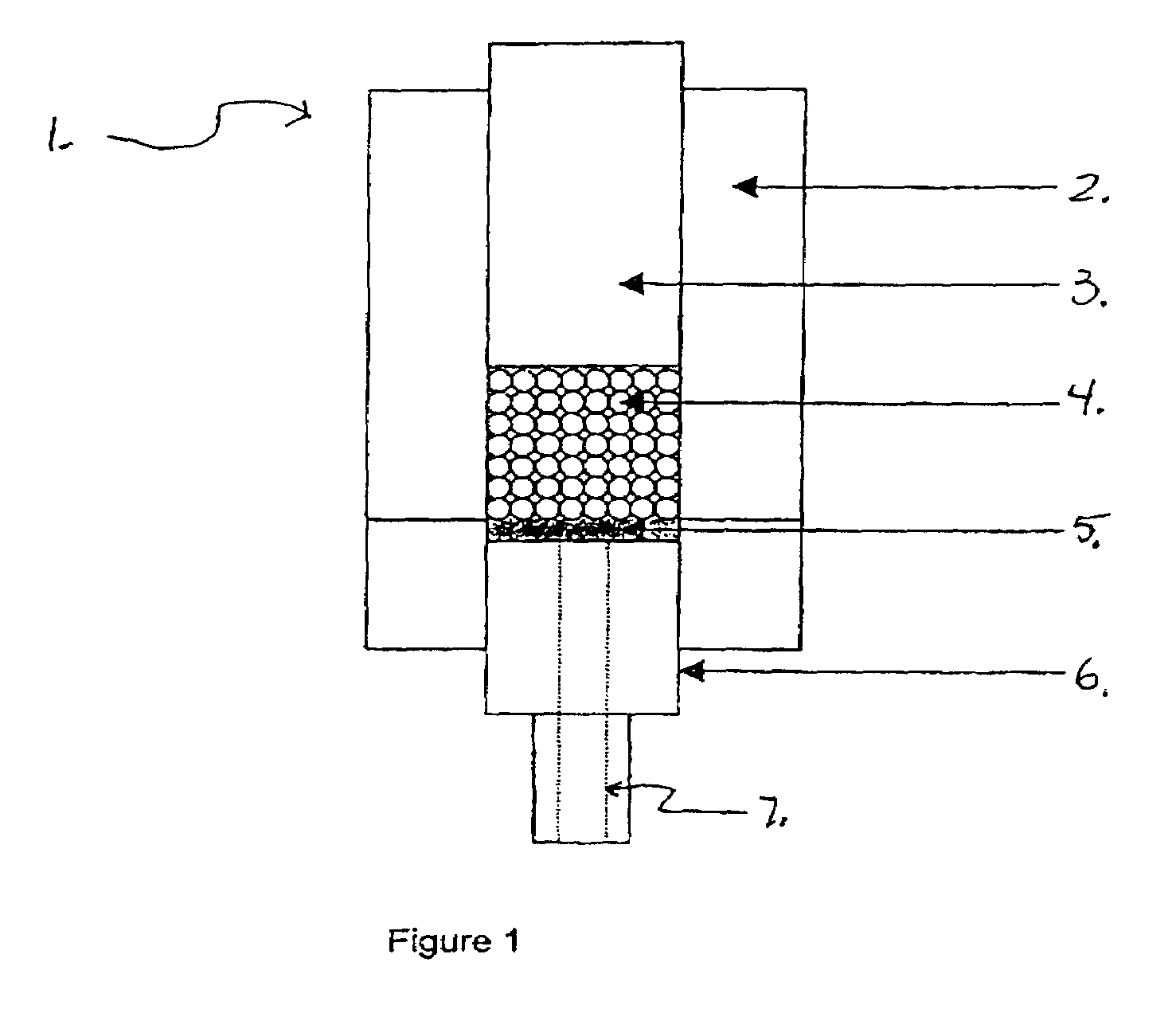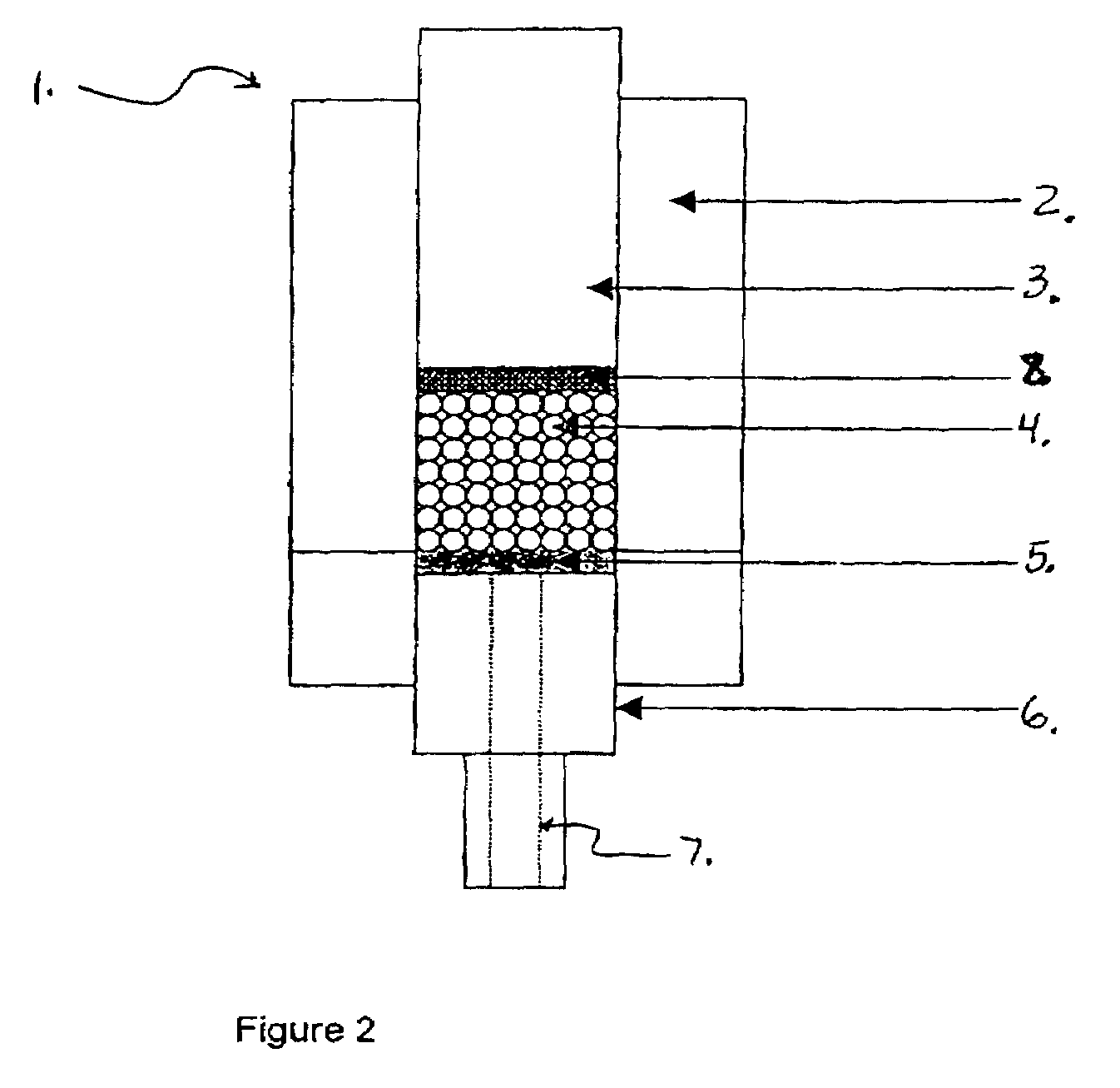Resin infiltration transfer technique
a technology of infiltration transfer and resin, which is applied in the direction of other domestic objects, woodworking apparatuses, chemistry apparatus and processes, etc., can solve the problems of increasing carbon content and reducing the number of viable part processing techniques, and achieve the desired loading level
- Summary
- Abstract
- Description
- Claims
- Application Information
AI Technical Summary
Benefits of technology
Problems solved by technology
Method used
Image
Examples
Embodiment Construction
[0020]A preferred embodiment of this invention comprises a process for producing a component with high SiC loading (fiber or particulate) that contains no large Si fissures as currently produced with existing technology. Such fissures result from matrix shrinkage prior to infiltrating the preform with molten silicon. FIG. 1 provides a schematic representation of the mold assembly 1 shown with a reinforcement media 4, a fitting with a hose connection 6, and a hose 7. The mold 1 is shown assembled with a filter 5 at the bottom to retain the reinforcement media 4 and subsequent SiC grit 8 additions in the mold 1. Also, the porous filter 5 provides a means to allow the resin system to wet the mold 1 as discussed in subsequent diagrams. The mold 1 is first loaded with the reinforcement media 4 (fibers or particles) and tapped or vibrated with the weight 3 in place. This allows for maximum packing density of the reinforcement media 4.
[0021]The weight 3 is then removed and SiC grit 8 is ad...
PUM
| Property | Measurement | Unit |
|---|---|---|
| Temperature | aaaaa | aaaaa |
| Percent by volume | aaaaa | aaaaa |
| Percent by volume | aaaaa | aaaaa |
Abstract
Description
Claims
Application Information
 Login to View More
Login to View More - R&D
- Intellectual Property
- Life Sciences
- Materials
- Tech Scout
- Unparalleled Data Quality
- Higher Quality Content
- 60% Fewer Hallucinations
Browse by: Latest US Patents, China's latest patents, Technical Efficacy Thesaurus, Application Domain, Technology Topic, Popular Technical Reports.
© 2025 PatSnap. All rights reserved.Legal|Privacy policy|Modern Slavery Act Transparency Statement|Sitemap|About US| Contact US: help@patsnap.com



